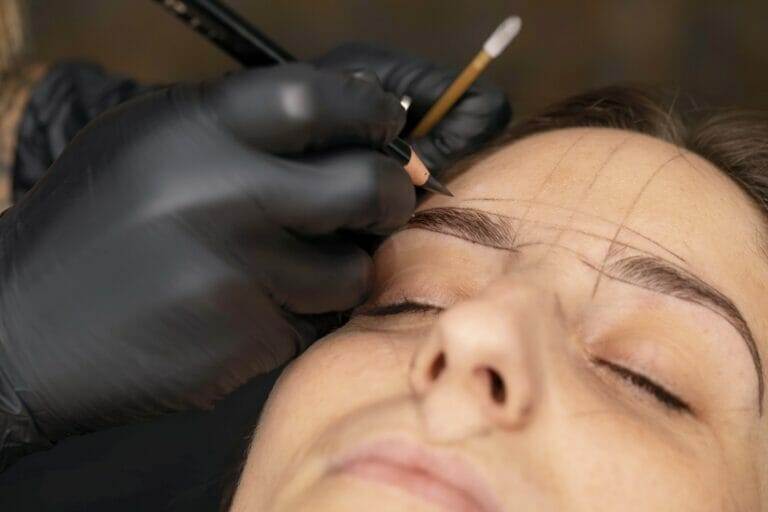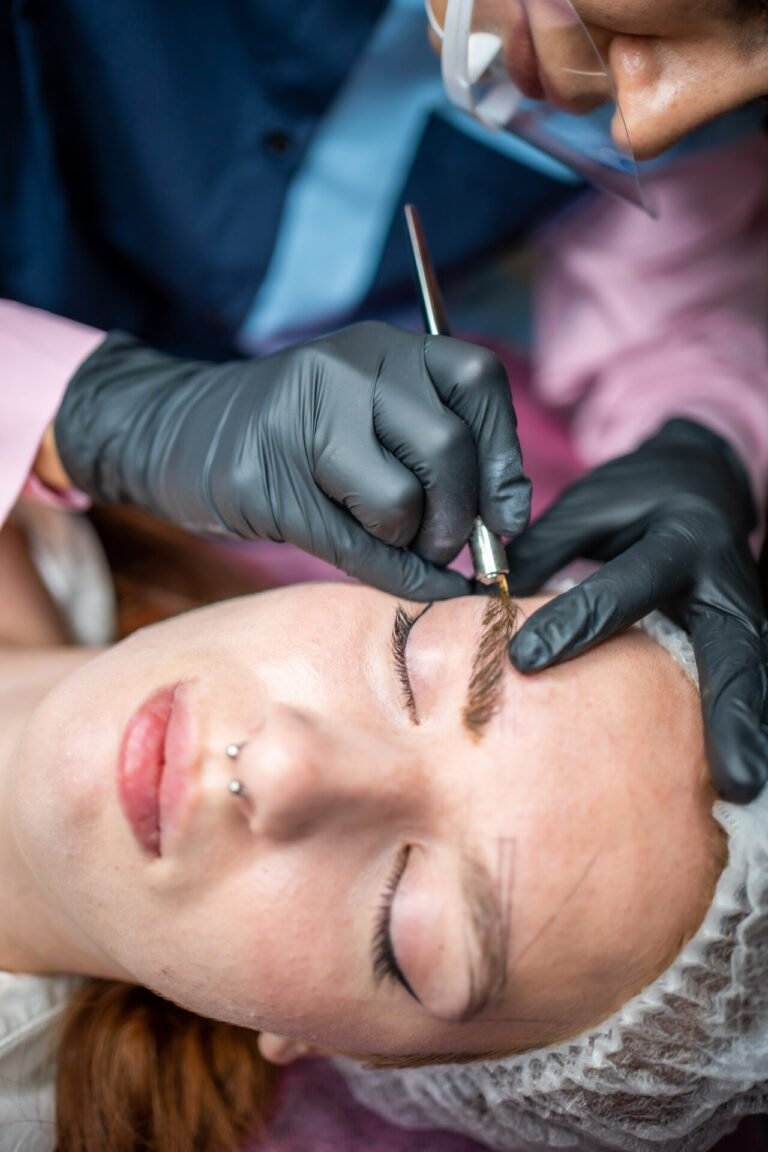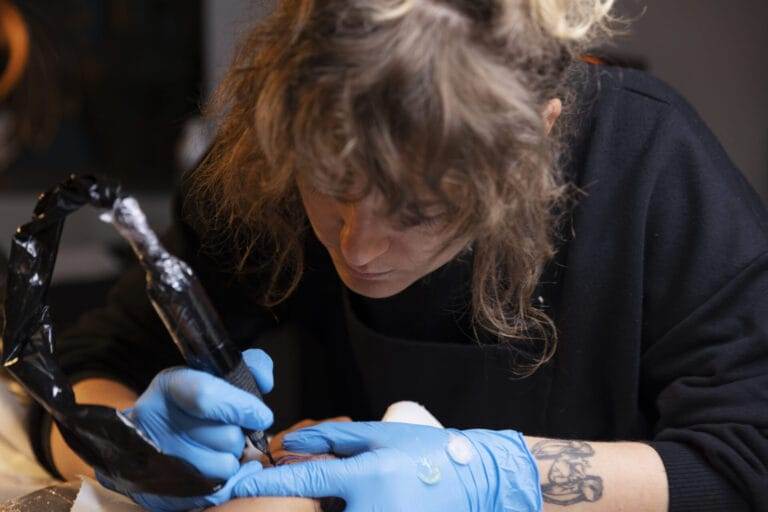Introduction
Understanding Cosmetic Tattoos
Cosmetic tattoos, often referred to as permanent makeup, provide a solution for enhancing natural beauty. Unlike traditional tattoos, which are primarily artistic, these tattoos focus on functional beauty enhancement, such as defining eyebrows, adding color to lips, or creating the appearance of eyeliner. The process involves implanting pigment into the skin, making it a popular choice for those seeking a long-lasting solution to their beauty routine. Many individuals are inclined to consider cosmetic tattoos due to their convenience. Imagine waking up every morning without the need for a lengthy makeup application. For those with busy lifestyles, this can be an absolute game changer. However, understanding the nuances of the procedure is essential. It’s advisable to consult with professionals who can explain the various techniques and color selections to ensure that the outcome aligns with personal preferences.
Importance of Proper Aftercare
Aftercare is a critical aspect of the cosmetic tattooing process that can never be overlooked. Proper aftercare not only ensures the best healing results but also prolongs the longevity of the tattoo. Following the procedure, the skin needs time to recover, and improper care can lead to fading or undesirable results. Here are key aftercare tips to follow:
- Keep it clean: Gently cleanse the area with mild soap and water.
- Moisturize: Apply a recommended ointment to keep the area hydrated.
- Avoid sun exposure: Keep the tattoo covered and protected from the sun to prevent discoloration.
- Do not pick at scabs: It’s crucial to let the natural healing process occur without interfering.
By adhering to these aftercare guidelines, individuals can ensure their cosmetic tattoos heal beautifully, allowing their features to shine for years to come.

Preparing for Your Cosmetic Tattoo
Consultation and Design
The journey to beautiful cosmetic tattoos begins with a thorough consultation and design process. This initial meeting is essential for setting realistic expectations and understanding the client’s vision. During the consultation, clients have the opportunity to discuss their preferred style—whether they seek a soft, natural look or a more defined appearance. Here’s what typically happens during this session:
- Skin Assessment: Professionals will evaluate the skin type and any specific concerns.
- Color Selection: Choosing the ideal pigment is crucial; this often involves trying different shades to find the perfect match.
- Design Layout: Tattoo artists often sketch the desired design, allowing clients to visualize the outcome before proceeding.
This collaborative approach ensures that clients feel confident and excited about their upcoming transformation.
Pre-Treatment Guidelines
To maximize the effectiveness and results of the cosmetic tattoo procedure, adhering to specific pre-treatment guidelines is crucial. Here are some essential recommendations to consider:
- Avoid Blood Thinners: Steer clear of alcohol, caffeine, and certain medications at least 48 hours before the appointment to minimize potential bleeding.
- Stay Hydrated: Drinking water ensures that the skin remains plump, making it more receptive to the pigment.
- Test for Allergies: If there are concerns about potential allergic reactions, it’s prudent to perform a patch test with the pigments in advance.
By following these guidelines, clients can help ensure a smooth and successful cosmetic tattoo experience. Preparation ultimately aids in achieving the best results, setting the stage for an exciting enhancement of natural beauty.
The Healing Stages of Cosmetic Tattoos
Days 1-3: Initial Healing
Understanding the healing stages of cosmetic tattoos is crucial for anyone who undergoes the procedure. The initial healing phase, which spans from Day 1 to Day 3, is when the body begins to recover from the impact of tattooing. During this time, it’s essential to be gentle and follow proper aftercare protocols. In the first few days, clients might notice some redness and swelling around the tattooed area. This is a natural response as the skin heals. Here’s what to expect:
- Slight Sensitivity: The tattooed area may feel tender to the touch.
- Initial Color Darkening: Expect the color to appear more intense immediately after the procedure, a normal part of the healing process.
It’s important to maintain a clean environment and keep the area moisturized using the recommended aftercare product to facilitate healing. Cleanliness will help prevent infection and ensure the best possible outcomes.
Days 4-7: Peeling and Scabbing
As the healing process continues, days 4 to 7 can be particularly intriguing and, at times, a little nerve-wracking for clients. This stage is characterized by peeling and scabbing, which can often lead to concerns about the design’s integrity. Here’s what to keep in mind during this period:
- Peeling Skin: Clients might notice light flaking of the skin; this is a natural part of healing. It’s akin to a sunburn—temporary but necessary.
- Scab Formation: Small scabs may form. Avoid picking at them; this is vital for preserving the integrity of the tattoo.
- Color Changes: As the skin heals, the pigment may appear lighter, which is completely normal. The final results will emerge once healing is complete.
By understanding and accepting these stages of healing, clients can navigate post-procedure recovery with ease and confidence, looking forward to the final results of their cosmetic tattoo.

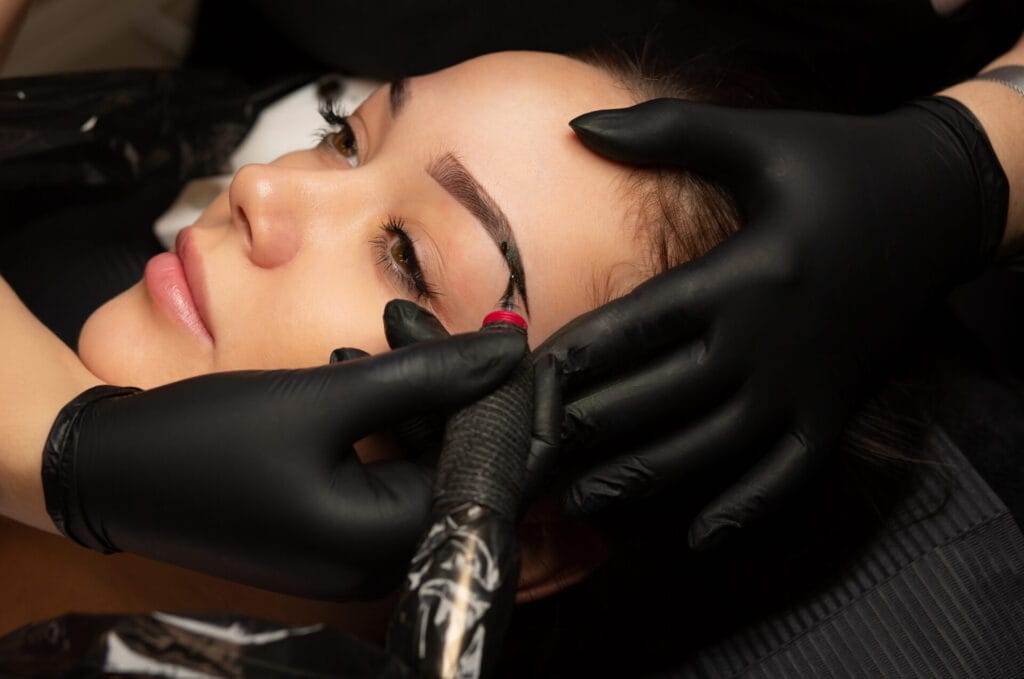
Caring for Your Cosmetic Tattoo Post-Procedure
Post-Procedure Care Instructions
Once the cosmetic tattooing process is complete, proper aftercare becomes vital for achieving the best results. Following the post-procedure care instructions ensures the tattoo heals beautifully and lasts longer. Here are some essential steps to follow:
- Keep the Area Clean: For the first few days, gently cleanse the tattooed area with mild, fragrance-free soap and lukewarm water to avoid irritation.
- Moisturize Regularly: Apply a thin layer of recommended ointment or healing balm to keep the area hydrated. This can help with the healing process and prevent excessive dryness.
- Avoid Water Exposure: In the initial days following the procedure, steer clear of soaking in water, such as swimming or hot baths, as this can introduce bacteria and negatively affect healing.
- Limit Sun Exposure: Protect your new tattoo from direct sunlight. Use a wide-brimmed hat or avoid sun exposure altogether for at least two weeks.
Adhering to these basic care instructions can significantly influence the outcome and longevity of the tattoo.
Avoiding Common Mistakes
In the excitement following a cosmetic tattoo, many individuals inadvertently make mistakes that can jeopardize their beautiful results. Being aware of these common pitfalls is essential:
- Picking or Scratching: One of the biggest mistakes is touching or picking at the tattoo. Not only does this disrupt the healing process, but it can also result in scarring or color loss.
- Using Harsh Products: Avoid applying alcohol-based products or heavy makeup over the area until fully healed. These can irritate the skin and lead to complications.
- Ignoring Allergies: If an allergic reaction occurs, such as excessive redness or itching, it’s crucial to consult a professional immediately rather than applying more products.
By keeping these common mistakes in mind and sticking to proper post-procedure care, clients can ensure they enjoy vibrant, long-lasting cosmetic tattoos they can proudly showcase.
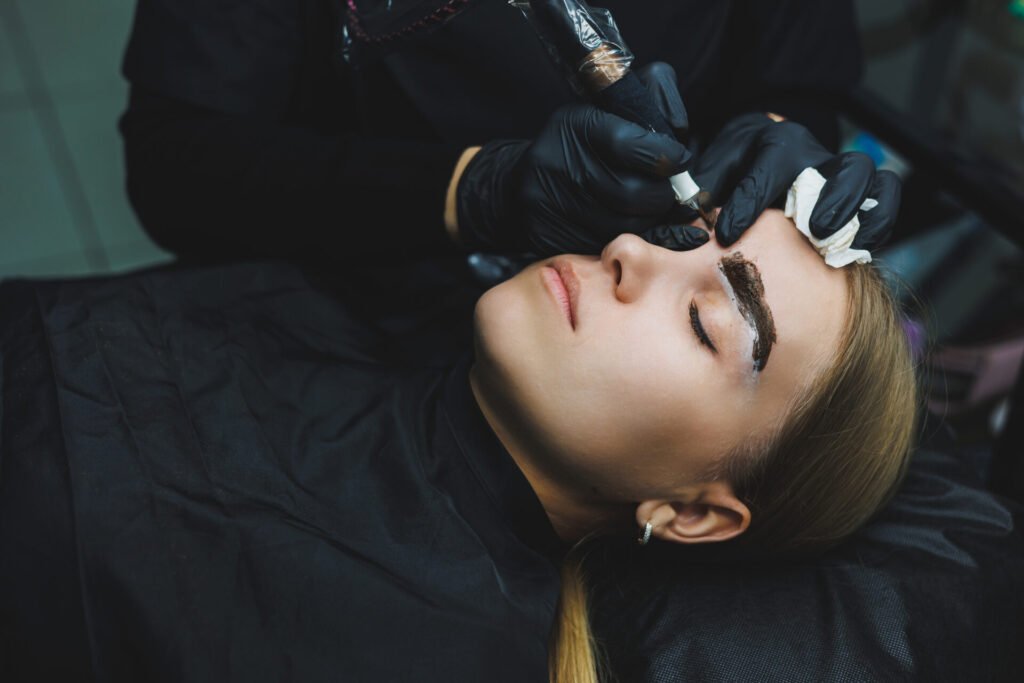
Managing Discomfort and Side Effects
Managing Pain and Swelling
Following a cosmetic tattoo procedure, experiencing some discomfort and swelling is not uncommon. Understanding how to manage these sensations can significantly enhance the healing experience. Typically, any pain or swelling can be expected to peak within the first few days post-procedure. Here are some effective strategies to alleviate discomfort:
- Cold Compress: Applying a cold compress to the tattooed area can help reduce swelling and soothe pain. Just be sure to wrap the ice pack in a cloth to avoid direct contact with the skin.
- Over-the-Counter Pain Relief: Mild pain relievers, such as ibuprofen or acetaminophen, can be helpful. However, it’s essential to avoid blood thinners like aspirin shortly before or after the procedure.
- Stay Elevated: Keeping your head elevated, especially while resting, can help minimize swelling, particularly in the areas around the eyes and lips.
Most importantly, if pain or swelling becomes severe or does not subside after a few days, it’s advisable to consult a professional.
Addressing Allergic Reactions
While cosmetic tattoos are generally safe, allergic reactions can happen in rare cases, primarily due to the pigments used. Signs of an allergic reaction can include severe redness, itching, or bumps around the treated area. If any of these symptoms arise, it’s crucial to take the following steps:
- Stop Using Products: Immediately cease the use of all topical products, including ointments or healing balms on the tattooed area.
- Contact a Professional: Reach out to the technician or a healthcare provider for guidance. They may recommend antihistamines or topical corticosteroids to relieve symptoms.
- Patch Testing for Future Procedures: If an allergic reaction occurs, undergoing a patch test with new pigments can help prevent similar issues in the future.
Being aware of potential discomforts and knowing how to manage them ensures a smoother healing journey and allows clients to enjoy their cosmetic tattoos with peace of mind.
Long-Term Care and Maintenance
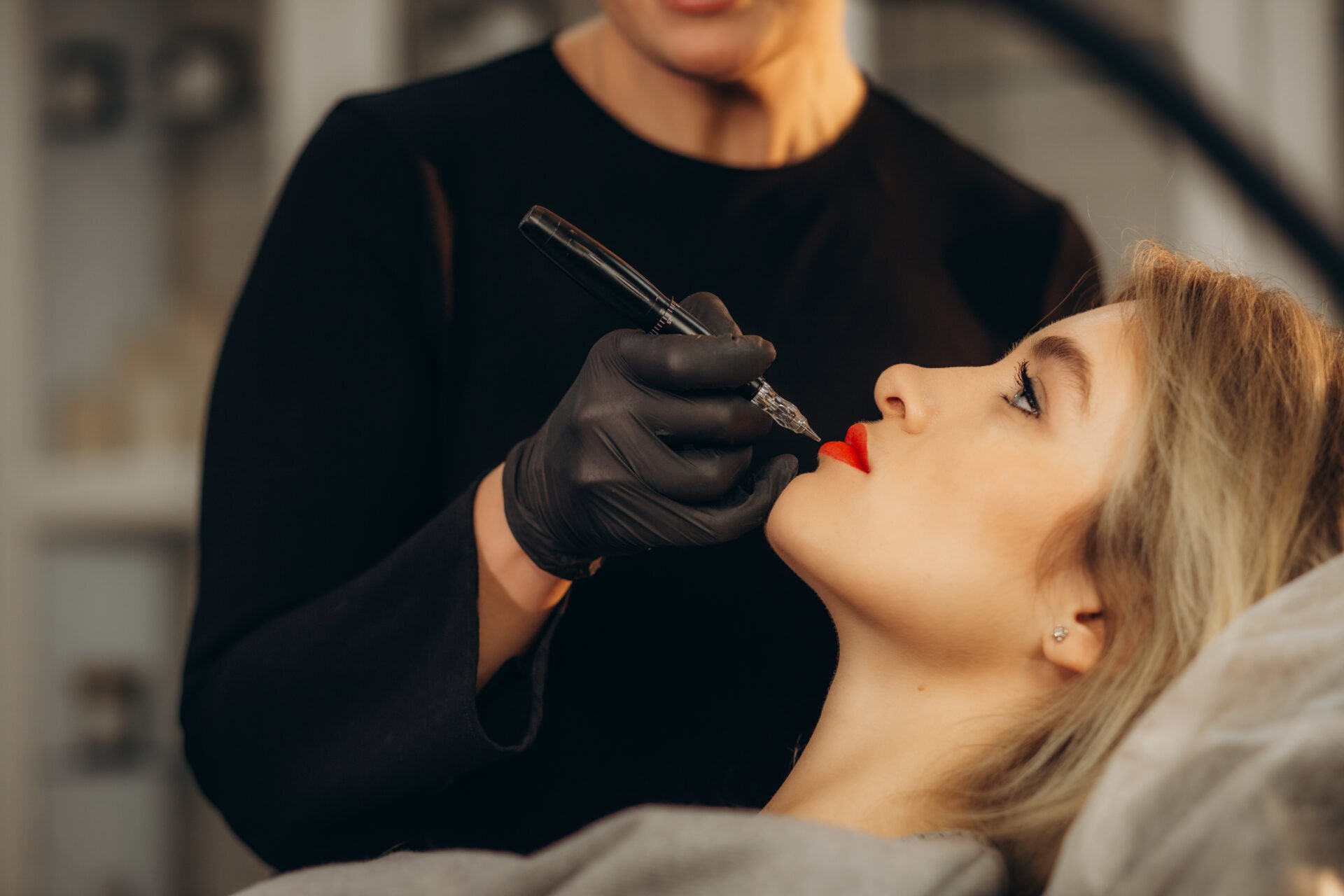
Tips for Prolonging Cosmetic Tattoo Longevity
Once your cosmetic tattoo has fully healed, it’s crucial to implement long-term care strategies to maintain its vibrant appearance. Proper maintenance not only enhances the aesthetic quality but also extends the life of the tattoo, ensuring it remains a beautiful feature for years to come. Here are some effective tips to consider:
- Sunscreen Protection: Applying a high-SPF sunscreen to the tattooed area will protect the pigment from sun damage and prevent fading. Sunscreen should be part of your daily routine, especially if the area is frequently exposed.
- Gentle Cleansing: Use gentle, fragrance-free cleansers to wash the area, avoiding harsh chemicals that can cause irritation. Keeping the area clean helps maintain its clarity and color.
- Moisturization: Keeping the skin hydrated is essential for maintaining pigment vibrancy. Opt for non-comedogenic moisturizers that won’t clog pores.
- Healthy Lifestyle Choices: A balanced diet and hydration can also play a role in skin health. Vitamins and antioxidants promote glowing skin, contributing to the longevity of your cosmetic tattoo.
Scheduling Touch-Up Appointments
Even with the best care, cosmetic tattoos may require occasional touch-ups to maintain their integrity and appearance. Scheduling regular appointments can help preserve the tattoo’s vibrancy and correct any fading. Consider the following:
- Timing for Touch-Ups: Most clients benefit from a touch-up session every 1-3 years, depending on skin type, lifestyle, and aftercare practices.
- Professional Assessment: During a touch-up appointment, professionals can assess the wear and evaluate areas that may need more pigment or reshaping.
- Consultation Before Touch-Up: It’s useful to have a brief consultation before the appointment to discuss any changes in preferences or design alterations.
By embracing these long-term care practices and scheduling touch-ups, clients can ensure their cosmetic tattoos continue to enhance their features, providing convenience and confidence in their beauty routine for years to come.

